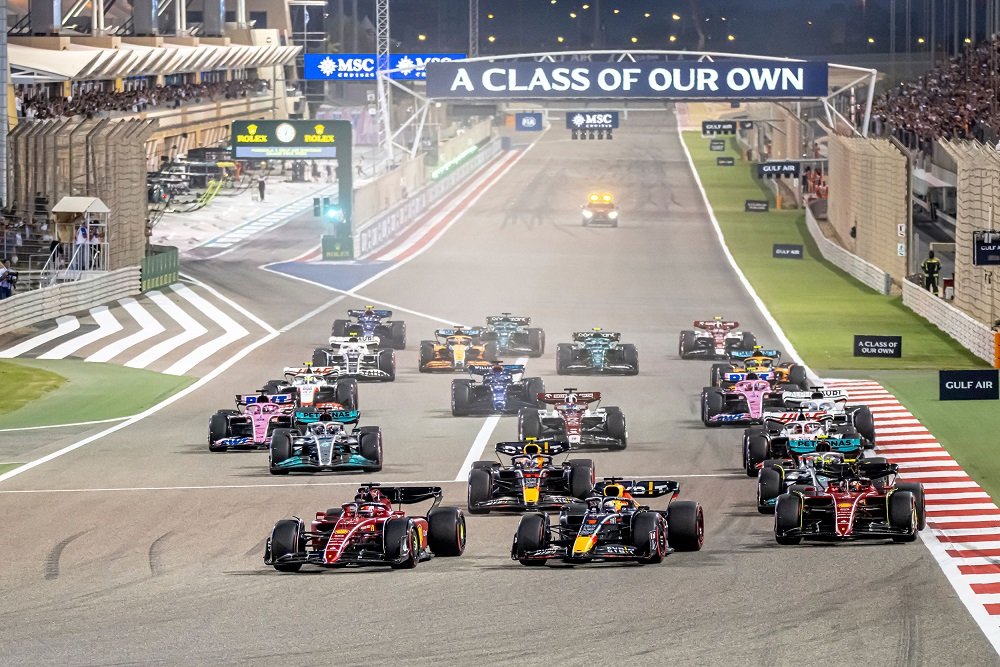F1’s CTO Pat Symonds enters Hydrogen debate
Pat Symonds, the CTO of Formula 1, has written an interesting article on the future of hydrogen, which raises some of the important issues that need to be addressed for its wider adoption. As it’s not often we have such an authority to refer to, we would like to expand on some of the points he has raised:
Grey/Green Hydrogen - Most hydrogen today is produced from fossil fuels (Grey) rather than renewable electricity (Green)
Basing decarbonisation on hydrogen produced from natural gas is clearly self-defeating. But, with renewables rapidly replacing fossil fuel generated electricity, most independent studies expect green hydrogen to be as cheap as grey hydrogen by 2030, after which grey hydrogen will start to become redundant. However, in the meantime, let’s not get too hung up on the hydrogen rainbow (it comes in blue, pink, red, white, and brown, as well as green and grey), because grey hydrogen provides the immediate supply around which hydrogen infrastructure can be built.
Efficiency - In terms of energy (electricity in the case of batteries and hydrogen) in versus energy out Fuel cells vehicles (FCEVs) are not as efficient as battery electric vehicles (BEVs) - in automotive applications, batteries are around 90% efficient, fuel cells are around 60%, and for comparison, petrol engines in road cars are around 33% efficient.
However, efficiency matters in different ways in different applications. For example, in Formula 1, pure thermal efficiency is all that counts: how much useful work (power) do I get for each litre of fuel I put in? However, in a 44-tonne truck, efficiency is all about payload – i.e. how much each tonne of payload costs to transport.
A battery-electric truck may be 90% energy efficient but, as it loses five tonnes of payload due to the weight of the battery, and takes much longer to refuel, resulting in a smaller payload and fewer operating hours per day, it suddenly looks very inefficient. A FCEV powered truck on the other hand can achieve close to parity in terms of powertrain weight with a diesel truck and has similar refuelling times, so, the simple energy efficiency of batteries is outweighed by the payload and operating efficiencies offered by hydrogen. Similar examples apply in aerospace, marine and other applications.
Hydrogen Embrittlement - Hydrogen molecules can permeate and weaken solid materials such as steel.
This is certainly an engineering issue, whether using hydrogen with a fuel cell or burning it in a combustion engine, but not a major problem. For example, special grades of stainless steel, such as 316, and plastic where low pressures apply, can be used for hydrogen pipework, and companies like JCB and Cummins have H2 ICE vehicles running reliably. Special steels do slightly increase costs, but that increase is a fraction of the cost difference between a BEV and an ICE.
Hydrogen ICE - In terms of internal combustion engines (ICE), is hydrogen better than biofuel/e-fuels?
There is significant debate around this topic. Motorsport (and high-performance car manufacturers) are very attracted by the idea of e-fuels, which combine green hydrogen with captured CO2 to produce a synthetic hydrocarbon that can directly replace petrol. But combining green hydrogen with CO2 is more expensive than using green hydrogen alone to fuel an ICE.
Reinforcing the point, the cost of CO2 from Direct Air Capture is off the charts and while in the short-term, mixing green hydrogen with waste CO2 captured from industrial plants is an interesting concept, as industry decarbonises and converts to renewable energy, that source will gradually disappear.
So, e-fuels will certainly have a place in motorsports and perhaps large airliners where cost is less of a concern than the gravimetric and volumetric efficiency of energy storage, but for reasons of cost, it is hard to see their widespread use in mainstream automotive applications.
Conclusion
The ever-widening debate about the routes to decarbonisation of transport reflects the fact that there is not a single solution - the single solution was oil, until it became an existential problem.
In terms of hydrogen’s role in this vital journey, we do not expect city cars or Boeing 787s to be powered by hydrogen any time soon, but the immediate applications will include commercial vehicles, trains, small to medium marine craft and light/regional aircraft.
To this end, we are dedicated to stimulating the debate, and engaging with policy makers and manufacturers, to ensure that the most appropriate decarbonisation solutions are applied to each mobility sector.
On the road to Sustainable Transport, hydrogen is not the only answer, but it is a vital component of the answer.

